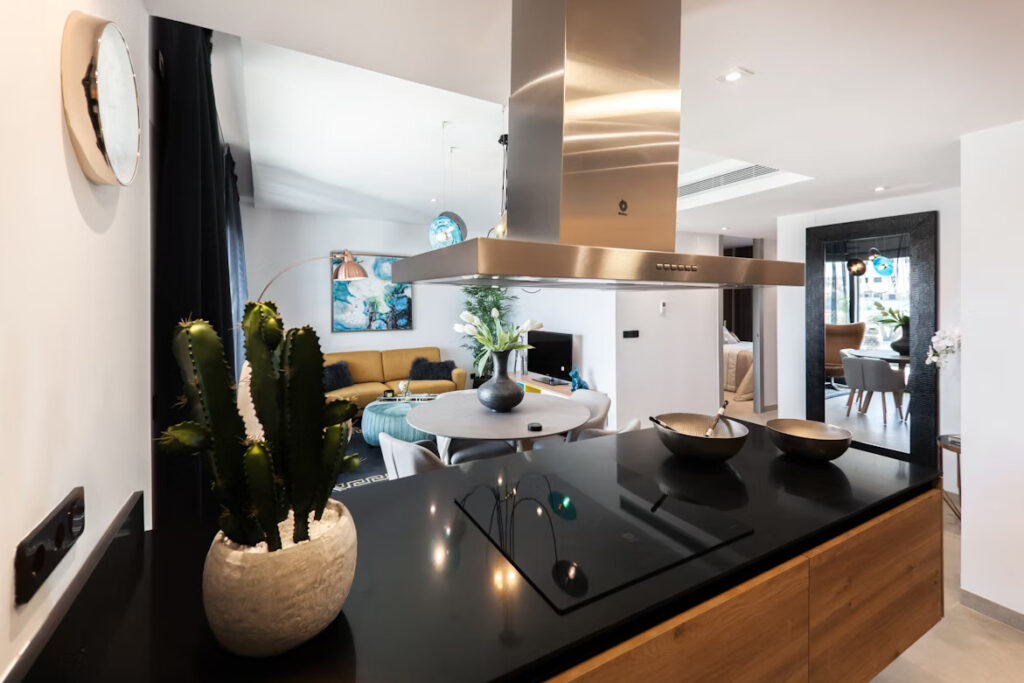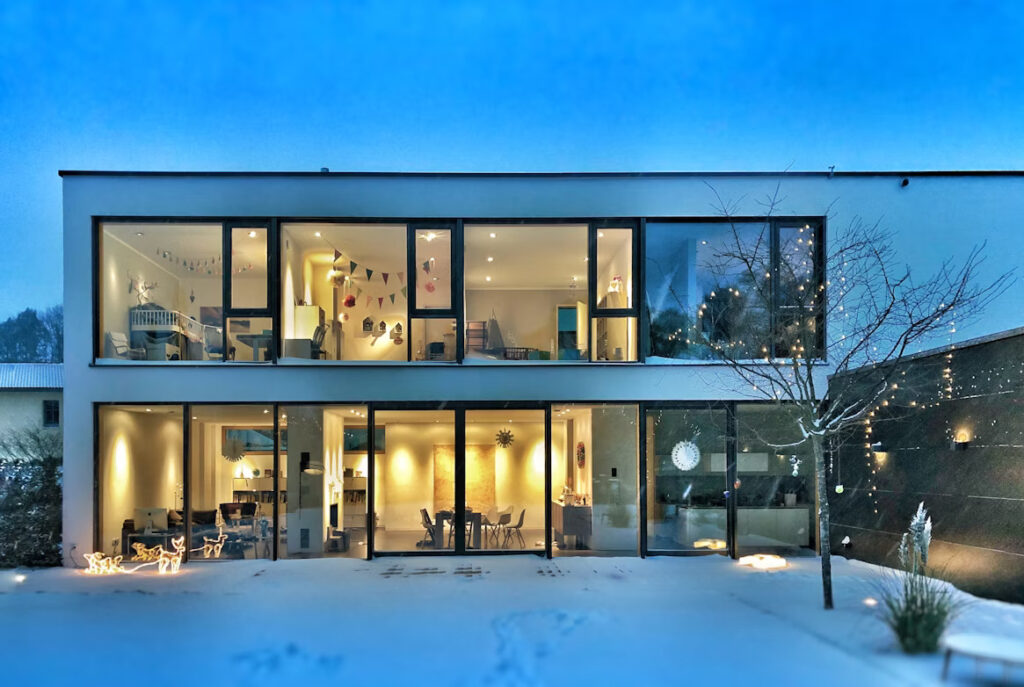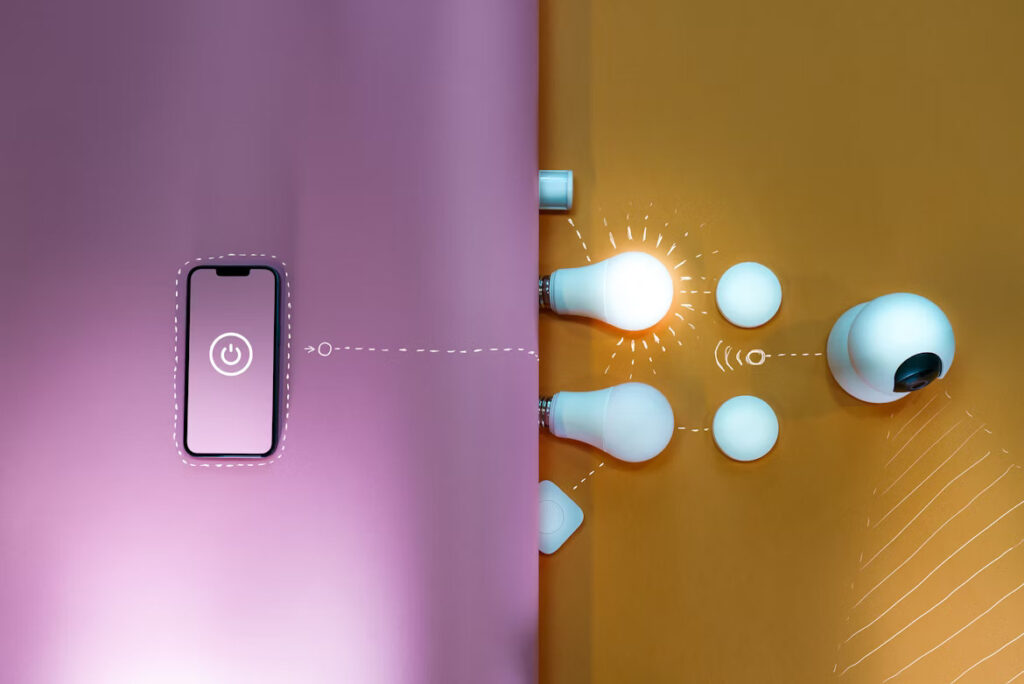Home Automation and Energy Management: A Practical Approach to Sustainability
In today’s world, sustainability is no longer just a buzzword, it’s a necessity. With increasing environmental concerns and rising energy costs, homeowners are looking for smarter ways to reduce their carbon footprint and utility bills. Enter the world of energy efficient smart homes, a perfect blend of smart automation and energy management solutions that not only promote eco-friendly living but also enhance daily comfort and convenience.
In this blog, we’ll dive deep into how home automation plays a crucial role in energy management, explore its benefits, and provide practical tips to create a sustainable living space using intelligent technologies.

The Rise of Energy-Efficient Smart Homes
The modern smart home isn’t just about voice-controlled lights or high-tech appliances. It’s about creating a living space that is energy-efficient, environmentally responsible, and aligned with your daily routines.
Energy efficient smart homes utilize automation technology to monitor and control energy consumption in real-time. From managing lighting and temperature to optimizing appliance usage, these systems help reduce energy waste without sacrificing comfort.
According to a study by the International Energy Agency, buildings are responsible for nearly 40% of global energy consumption. By integrating smart automation, we can significantly reduce this number, making homes a key part of the sustainability movement.

How Smart Automation Drives Energy Efficiency
So, how exactly does smart automation improve energy efficiency? Let’s break it down.
- Smart Lighting Systems
Traditional lighting systems often lead to unnecessary energy usage. Smart lighting solutions automatically adjust brightness based on occupancy, time of day, or ambient light conditions.
- Motion sensors ensure lights are on only when needed.
- Scheduled lighting can reduce nighttime energy waste.
- Dimming capabilities save power while creating ambiance.
Over time, these small adjustments lead to significant energy savings, making lighting one of the easiest yet most effective energy upgrades.
- Automated Climate Control
Heating and cooling account for a major portion of home energy use. Smart thermostats and climate control systems optimize HVAC operation by learning user behavior and adjusting temperatures accordingly
- Set different temperatures for day and night.
- Use zoned heating/cooling to control individual room climates.
- Monitor and adjust remotely via smartphone apps.
This intelligent temperature management ensures comfort while minimizing energy waste, perfect for eco-conscious homeowners.
- Smart Appliances and Plugs
Many household appliances consume energy even when idle. By using smart plugs, homeowners can cut off power to devices not in use. Additionally, smart appliances like refrigerators, washing machines, and dishwashers come with energy-saving modes and remote control capabilities.
For instance:
- Schedule laundry during off-peak energy hours.
- Receive alerts when your fridge door is left open.
- Turn off idle devices from anywhere.
Such features allow for practical energy management solutions tailored to each home’s needs.
- Integrated Energy Monitoring
One of the biggest advantages of energy efficient smart homes is the ability to track and analyze energy usage in real time.
- Identify high-consumption devices.
- Set monthly energy goals.
- Get usage reports and recommendations.
These insights empower homeowners to make data-driven decisions, continuously optimize usage, and ultimately lower their carbon footprint.
Real-Life Benefits of Energy-Efficient Smart Homes
Investing in smart automation and energy management solutions offers more than just financial gains. Here are the core benefits that make the shift toward sustainability worth it:
- Lower Energy Bills
Automated systems prevent energy waste by turning off unused lights, optimizing heating/cooling, and reducing appliance standby time. These savings can add up to 30% lower electricity bills annually.
- Increased Home Value
Eco-conscious buyers are increasingly interested in homes with smart and sustainable features. A well-integrated smart home system adds value, making your property more attractive on the market.
- Greater Comfort and Convenience
Imagine your home adjusting the lights, temperature, and appliances automatically based on your preferences. Smart homes create a seamless living experience, convenient, cozy, and efficient.
- Environmental Impact
Energy efficient smart homes significantly reduce greenhouse gas emissions. By lowering energy consumption, you contribute to a healthier planet and set a strong example for your community.
Key Components of an Energy-Efficient Smart Home
To build a sustainable smart home, you need the right technologies working in harmony. Here are the essential components to consider:
✅ Smart Thermostats
Devices like Nest or Ecobee adapt to your habits and help save energy by controlling HVAC systems more efficiently.
✅ Smart Lighting (LED + Automation)
LED lights paired with automation or sensors reduce electricity use dramatically. Brands like Philips Hue and LIFX are leading options.
✅ Energy Monitoring Systems
Smart energy meters and apps like Sense or Neurio help you visualize consumption and track performance in real-time.
✅ Smart Plugs and Power Strips
These affordable tools make even non-smart devices more energy-aware by cutting off idle power.
✅ Solar Integration & Battery Storage
Pairing automation with solar panels and home batteries takes sustainability to the next level, offering clean energy independence.
Practical Tips to Get Started with Home Automation & Energy Management
Ready to create your own energy efficient smart home? Here’s how to take a practical and budget-friendly approach:
- Start Small
You don’t need to automate your entire home overnight. Begin with a smart thermostat or lighting system and scale as needed.
- Choose Compatible Devices
Use systems that work with each other (like those compatible with Alexa, Google Assistant, or Apple HomeKit). This ensures smoother integration and easier control.
- Automate Routine Tasks
Set up schedules and scenes for daily actions. For example:
- “Good Night” scene: turns off all lights and sets the thermostat.
- “Away Mode”: switches off unnecessary devices when you’re out.
- Monitor and Adjust
Use energy monitoring tools to track progress. Tweak automation settings to better match your habits and reduce waste.
- Work with Professionals
For a larger setup, consider consulting a certified home automation expert. They can help design a system that aligns with your goals, budget, and sustainability targets.
Challenges and How to Overcome Them
While the advantages are plenty, transitioning to smart automation can come with a few challenges:
❌ Upfront Costs
Smart devices and automation systems require investment. However, the long-term savings often outweigh the initial costs.
Tip: Prioritize high-impact upgrades like smart thermostats or energy monitors first.
❌ Tech Learning Curve
Some homeowners find it tricky to manage connected systems.
Tip: Use user-friendly apps and choose devices with good customer support and community forums.
❌ Privacy & Data Concerns
Smart devices collect usage data that may raise privacy concerns.
Tip: Opt for trusted brands, update firmware regularly, and secure your Wi-Fi network.
The Future of Sustainable Living Is Smart
The fusion of smart automation with energy management solutions is shaping the future of residential sustainability. As technology evolves, smart homes will become even more intuitive, learning habits, predicting needs, and optimizing energy use automatically.
We’re moving toward a world where every switch, sensor, and system contributes to a greener tomorrow, and it starts at home.
Whether you’re planning a full-scale home automation upgrade or just exploring options, embracing smart energy solutions is a powerful step toward environmental responsibility and sustainable living.

Final Thoughts
Creating an energy efficient smart home isn’t just a trend, it’s a transformative lifestyle choice that benefits your wallet, your comfort, and the planet.
By blending smart automation with thoughtful energy management solutions, you can drastically reduce energy waste, lower utility bills, and contribute to a sustainable future, without compromising on modern living standards.
So why wait? Start your journey today, and turn your home into a smarter, greener, and more efficient space.
